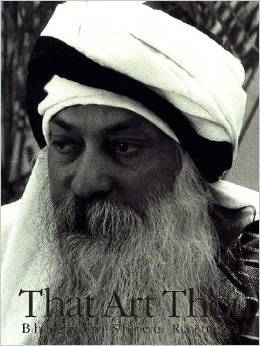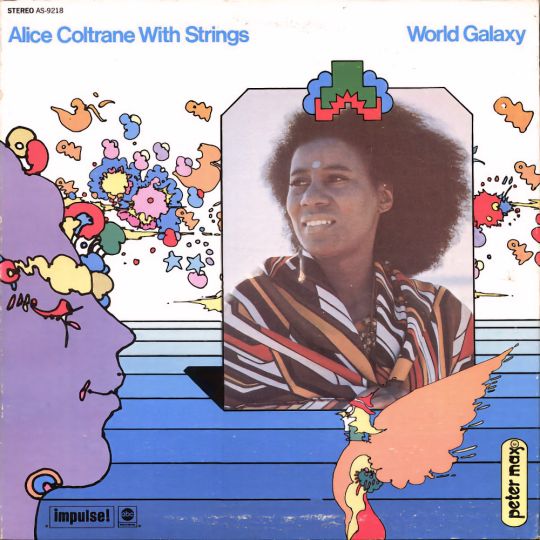#satchidananda
Text

The great Tantric master (mahasiddha) Virupa, who is said to have lived in the seventh century, became a wandering yogi after being an abbot of India’s greatest Buddhist monastery.
This painting shows him seated with a raised hand forming a gesture of subjugation. Virupa’s gesture—a raised hand with a finger pointing up to the sun—refers to an episode when he was on an epic drinking spree and agreed with the tavern proprietor to settle the bill at sunset. He then used his great meditative powers to stop the sun in its course until after several days without night the local ruler, fearful of a possible drought, paid his tab. This story emphasizes the magical abilities Virupa gained from tantric practices, which he transmitted to his students.
We hope you celebrate today by remembering Virupa and enjoying the sunshine!
________
Mahasiddha Virupa; Gongkar Chode Monastery, U Province, Central Tibet; ca. 1659-1671; pigments on cloth; Rubin Museum of Art; C2004.14.1 (HAR 65340)
[Rubin Museum of Art]
* * * *
“36. The intellect and the Puruṣa (Ātman, Self) are totally different, the intellect existing for the sake of the Puruṣa, while the Puruṣa exists for its own sake. Not distinguishing this is the cause of all experiences; and by saṁyama on the distinction, knowledge of the Puruṣa is gained.
37. From this knowledge arises superphysical hearing, touching, seeing, tasting and smelling through spontaneous
38. These [superphysical senses] are obstacles to [nirbija] samādhi but are siddhis (powers or accomplishments) in the worldly pursuits.”
― Satchidananda , The Yoga Sutras of Patanjali
#tantra#Mahasiddha Virupa#Siddhis#Rubin Museum of Art#Buddhist#Satchidananda#The Yoga Sutras of Patanjali
5 notes
·
View notes
Text
Life Power rises by penetrating the body in the seventh plane, gets the layer of the cerebrum removed, and the ocean of Bliss of God is seen. It is called seeing the ocean of Satchidananda – the Blissful aspect of God. - Sri Jibankrishna or Diamond
0 notes
Text
That Which Is - Osho
That Which Is – Osho
The supreme self is formed by the word “that” which has maya, illusion as its disguise – which is the source of the world, which is invested with the quality of omniscience, omnipresent, et cetera; which is mixed with the indirectness, and which is reality itself.
And that which is the shelter of the I-experience, and of the word “I” and whose knowledge about his own inner being is false, is…

View On WordPress
0 notes
Text

59 notes
·
View notes
Text

Spiritual jazz (or astral jazz)[1] is a sub-genre of jazz that originated in the United States during the 1960s. The genre is hard to characterize musically but draws from free, avant-garde and modal jazz and thematically focuses on transcendence and spirituality. John Coltrane's 1965 album A Love Supreme is considered landmark in the genre.

Origins
Pharoah Sanders in 1981.
Critics usually associate spiritual jazz with the 1960s but the beginnings of the genre can be traced to the 1940s and 1950s in works such as Black, Brown and Beige by Duke Ellington, Zodiac Suite by Mary Lou Williams, and Jazz at the Vespers by George Lewis.
During the 1960s in the United States, the civil rights movement was occurring, causing societal change and political movements. As a result, African-American people gained more freedom to celebrate their culture and to express themselves religiously. This led to a desire to push the conventions of jazz, with some artists choosing to search for transcendence and spirituality in their music.
John Coltrane's 1965 album A Love Supreme is generally considered the genesis of spiritual jazz though Coltrane can be heard developing the sound on the song "Spiritual" recorded four years earlier. Treblezine wrote "Spiritual jazz begins, essentially, with John Coltrane," while Pitchfork wrote "This musical exploration [of spirituality] was epitomized by tenor saxophonist John Coltrane". A Love Supreme and other works by John Coltrane inspired other jazz musicians to create music searching for transcendence. For example, Pharoah Sanders and Don Cherry were considered to have taken inspiration from Coltrane's spiritual works.
After John Coltrane's death in 1967, his wife Alice Coltrane and Sanders—both who had previously played with Coltrane—were some of the first to continue the sound of the genre. Coltrane's 1971 album Journey in Satchidananda combined spiritual jazz with influences from Hindustani classical music, after her journey into spirituality with help from Swami Satchidananda. Journey in Satchidananda used ragas, harps, sitars, and ouds to achieve its sound. Pharoah Sanders took inspiration from Arabic, Indian, and Afro-Cuban music to create early spiritual jazz albums, including Tauhid (1967) and Karma

#african#afrakan#kemetic dreams#africans#brownskin#afrakans#brown skin#african culture#afrakan spirituality#jazz spirituality#spiritual jazz#afro cuban music#pharoah sanders#tauhid#journey in satchidananda#ragas#harps#sitars#ouds#Kamasi Washington#alice coltrane#duke ellington#miles davis#african music
45 notes
·
View notes
Text
youtube
Alice Coltrane, "Journey In Satchindananda"
#alice coltrane#journey in satchidananda#spiritual jazz#pharoah sanders#charlie haden#happy international women's day#a day late
3 notes
·
View notes
Text
Think of God constantly
14. It is easy to reach me, Arjuna, for the Yoga practitioner, steady in practice, who thinks of me constantly and has no greater attachments.
He says, “Yes, my dear Arjuna, whoever keeps me in his or her heart constantly, without getting distracted by anything else, always gets me easily.”
It’s a promise. The only problem is how to think of God constantly. The key is understanding what constantly thinking of God means. It’s not that you just sit there in a corner and think of God constantly. Instead, involve yourself in daily activities feeling that all that you are doing is an offering to God. That’s one way. Or feel that everything is being done by God through you as an instrument, which is a little higher level. With individual consciousness you might feel that you are doing things, but in the back of your mind you keep on knowing: “Without that higher consciousness, I can’t do anything. So, I’m only an instrument being made to get involved in various activities.” That’s the best way to remember God constantly. Remember that higher consciousness.
Then you don’t even think of offering everything to God. Such offerings come only after you think, “I did this. Now I’m offering it to You.” You might think, “I made a delicious dinner, and I’m offering it to You.” It’s all right; you can do it that way. But it means there’s still a little of your ego involved. The best way is to keep reminding yourself that even the capacity to make the dinner, to do anything, comes from God. Without God nothing moves. There is a beautiful saying in Sanskrit, and also in Tamil: “Without God not even an atom would move.” That means even atomic energy, even the most minute movements in this cosmos happen only because of that Supreme Consciousness. If that consciousness wasn’t present, nothing would move. By remembering this truth always, we are remembering God always: “God, I’m not doing anything. You are making me do everything.”
But if I say that without the cosmic consciousness things won’t move, it leaves the impression that where there is no movement, no energy, there is no consciousness, as if it were a vacuum. Then how can it be called cosmic consciousness, omnipresence? In reality even where there’s no movement at all, there is consciousness, but it’s not active. In a way, it’s dormant, sleeping, potent. There’s consciousness even in the inert particles of inanimate things. Only it’s not functioning.
The great saint, Ramalinga Swamigal, used to sing, “Lord, You are feeding me; I am fed. You are making me sleep; I am sleeping. You are showing me; I am seeing. You are making me happy; I am happy. You are moving me; I am moving like a puppet. And not only me, the whole universe is Your puppet. Please grant me the boon to remember this truth always.”
The advantage in remembering God this way is that it doesn’t boost your ego. If you remember that everything you do is the act of God, then you won’t be thinking, “I did it. That’s my accomplishment.” The “I, me, mine” gets completely annihilated, which is the very purpose behind Sri Krishna saying, “Continuously think of me, because I am the one doing everything.” He doesn’t mean, “I’m going to be happy because you think of me. And if you don’t think of me, I’ll feel terrible or I’ll be disappointed.” No, He’s saying this for your benefit: “Know that I am the one working behind everything. I am the one who sent you here. I am the one who is going to get you back. And I am the one who is keeping you every minute. Even the air you’re breathing goes in and out because of me. Remember this.” That’s the essence of this very beautiful sloka.
–Swami Satchidananda en “The living Gita”
2 notes
·
View notes
Text
thinking about how i am frequently homesick for an era that didnt even exist. sometimes i see it in art or hear it in music and i think man i miss those times. but those times never existed and even if they did i wasnt even born yet. do you get it?
#small car by marvin pontiac#journey in satchidananda by alice coltrane#pulaski at night by andrew bird#reds and ochres and late afternoon sunlight through green glass bottles and blue sky behind white plaster#something rust red cooking in a cast iron pot over a fire#wood and stone and salt and thick paint in abstract shapes on canvas in huge galleries and everywhere filled with golden light#i dont know how to describe the Longing. what exactly is it that i miss? i dont know!! i dont remember!!
18 notes
·
View notes
Text
i got to go to the antique mall/record store near my therapist's office today as my One (early) birthday treat (since we might not be able to go again) & got a shit ton of records. went in for exactly 2 that i wasn't sure would still be there and walked out with 6 out the record store & 3 out of a mall booth
#records miraculously waiting for me for over 6 months were peter gabriel 1 & peter gabriel 3 in german :^)#i finally got my first emmylou & bob dylan records as well as fucking JOURNEY IN SATCHIDANANDA#and a suitable replacement for my extremely beat-up copy of a trick of the tail that has a bright yellow vinyl#personal
5 notes
·
View notes
Text

another rorschach test for whatever kind of week i’ve had *-*
3 notes
·
View notes
Text
i’ve gotten into the habit of driving down to the beach alone and listening to albums all day on saturdays and it’s like the only thing i’ve been consistently looking forward to lol
#there’s a little gazebo i like to sit under and just watch the waves it’s rlly relaxing#perks of living like 15 minutes from the beach lol#listening to journey in satchidananda by alice coltrane and nowhere by ride today hypeee#maybe some other stuff too im not sure
3 notes
·
View notes
Text

Alice Coltrane's Journey In Satchidananda
#alice coltrane#journey in satchidananda#impulse!#music#jazz#free jazz#avant garde#modal jazz#world music#available to listen where all good music is of course
2 notes
·
View notes
Text
We are not going to change the whole world, but we can change ourselves and feel free as birds. We can be serene even in the midst of calamities and, by our serenity, make others more tranquil. Serenity is contagious. If we smile at someone, he or she will smile back. And a smile costs nothing. We should plague everyone with joy. If we are to die in a minute, why not die happily, laughing?
Sri S. Satchidananda, The Yoga Sutras of Pantanjali
1 note
·
View note
Text

23 notes
·
View notes
Text

0 notes
Text
Day Eight Hundred and Eleven
1 note
·
View note